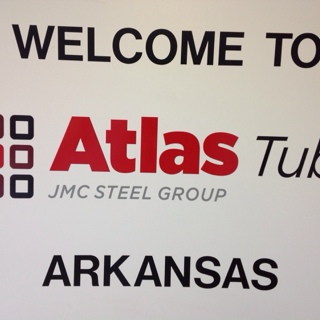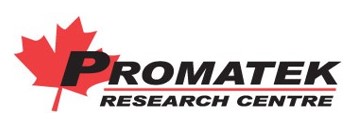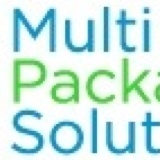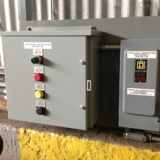Information
-
Machine No./Name:
-
Add media
-
Vendor:
-
Project/Model:
-
Auditor Name
-
Auditor Title/Dept
-
Tema Safety:
-
Auditor Phone:
-
Inspection Date:
-
Inspection Location:
-
Inspection Line:
-
OP No. or Process:
-
Equipment's Safety Cat. or Performance Level:
-
Auditor Signature:
-
Observed Operations (check all that apply)
-
Manual
-
Automatic
-
Maintenance
-
Other (describe equipment condition)
-
If other add equipment condition:
-
INSPECTION PREP, PPE, & BEST SAFE PRACTICE GUIDELINES (not included in scoring) <br>
-
Prep 1 - Special foot protection required to perate equipment [e.g., WJTA (Water Jet Technology Associate or TMMC/Ontario Requirements)]
-
Comments:
-
Add media
-
Prep 2 - Sepcial eye and/or face prtection required to operate equipment (laser, arc flash, welding)
-
Comments:
-
Add media
-
Prep 3 - Process specific oil mis tnad dust collection systems are completed and functioning for production trials, or alternate temporary monitoring and systems are in place
-
Comments:
-
Add media
-
Prep 4 - Designed-in noise reduction systems are completed and functioning for production trials, or alternate temporary
-
Comments:
-
Add media
-
Prep 5 - Machine and cell access doors are recommended to be painted yellow.
-
Comments:
-
Add media
-
Prep 6 - For laser equipped machines (IIIB & IV), the NAMC Laser Safety Officer has been notified of the laser's power.
-
Comments:
-
Add media
-
Prep 7 - Equipment related confined spaces are identified.
-
Comments:
-
Part 8 - Signs/placards identifying the Confined Space area are provided [(1910.146)(c)(2)]
-
Comments:
-
Add media
-
Part 9 - Centralized Lockout Center provided (Note: Thi sis a best practice)
-
Comments:
-
Add media
-
Equipment Guarding 29CFR1910.212, ANSI B11.19-2010
-
G-1 All moving parts (geaers, set screws, etc) or equipment that create pinch pooints or other potential hazards are guarded by a physical barrier, light curtain, mat switch, or other safety device. This device(s) must be adequate in locaiton and size to prevent reaching around, under or climbing over a hazard zone. <212(a)(1), 212(a)(3), 219(c)(1), B11.19, 7 & 8>
-
Comments:
-
Add media
-
G-2 The design or loaction of hte guard does not cteaet a new hazard. <212(a)(2) & ANSI B11.19, 7.1.2, 7.1.3>
-
Comments:
-
Add media
-
G-3 Perimeter fence must not have an opening at hte bottom no greateer than 180mm, maximum of 40mm openings, & is typically 1800mm high. <212(a)(1)>
-
Comments:
-
Add media
-
G-4 The guard must be constructed of materials suitable for the type of hazard it is guarding. <B.11.19, 7.1.1>
-
Comments:
-
Add media
-
G-5 The guard must be constructed of materials suitable fore environment it is exposed to. <B.11.19, 7.1.1>
-
Comments:
-
Add media
-
Equipment Guarding 29CFR1910.212, ANSI B11.19-2003
-
G-6 All machine guarding for fixed location is securely mounted. <212(a)(2)>
-
Comments:
-
Add media
-
G-7 Perimeter guarding should be constructed of a material that provides the best visibility of related machinery. <B11.19, 7.1.6> Machine & cell access doors are recommended to be painted yellow.
-
Comments:
-
Add media
-
G-8 A perimeter safetguarding around the machine cell must be designed, designated, and installed to prevent accidental or intentional whole body entry. A combination of walls, fences, photo eyes, safety mats, limit switches, etc. may be used to prevent or detect entry into a machine cell as determined by the risk assessment. (Note: Typical height for light curtains is 1400mm to top to prvent reach over & 180mm from floor unless other guarding is used.) <212(a)(1), B11.19, 7 & 8>
-
Comments:
-
Add media
-
G-9 Light curtain location as determined by Safety Distance calculation, ANSI B11.19 6.2 is approriate for the speed of the equipment and stopping time. <212(a)(1) & B11.19 8.3.2.3>
-
Comments:
-
Add media
-
G-10 Object (vehicle, bumper, engine, etc.) passing through points are guarded to prevent workers whole body entry into the hazard zone(s) undetected. <212(a)(1), b11.19, 8.3.2>
-
Comments:
-
Add media
-
G-11 There are either safety mats, swinging doors, or other effective devices at all object entries to eliminate pinch points. <212(a)(1)> <br>
-
Comments:
-
Add media
-
G-12 Safety mats are at a minimum 1200mm from the hazard. (Note: Exact distance determined by Safety Distance calculation) <B11.19 8.5.2.3> <br>
-
Comments:
-
Add media
-
G-13 Safety mats are secured to the floor and do not present a trip hazard <1910.22(b), B11.19, 8.5.2.3> <br>
-
Comments:
-
Add media
-
G-14 Access gates, doors and windows that provide whole body access to the machine/robot cell and do not require a special tool to open must be equipped with an electrical circuit interlock/safety switch that will stop equipment motion when opened as determined by the risk assessment. <212.(a)(3)> <br>
-
Comments:
-
Add media
-
G-15 Guards and covers may not be easily removed or by-passed without a tool. <212(a)(3), B11.19, 6.6.5, 7.2.6> <br>
-
Comments:
-
Add media
-
G-16 E-Stop(s) located at all work station(s). <NFPA 79 10.7.1.2> <br>
-
Comments:
-
Add media
-
G-17 E-Stop(s) latching type and properly marked with yellow background. <NFPA 79 10.7.2.2 & 10.8.4> <br>
-
Comments:
-
Add media
-
G-18 Activating any safety device stops equipment motion as expected. <212(a)(1)> <br>
-
Comments:
-
Add media
-
G-19 After activating and restoring a safety device, an additional action is required to restart the system. <NFPA 79 10.8.3> <br>
-
Comments:
-
Add media
-
G-20 Two hand controls are designed and located to prevent operation other than by two hands (e.g., controls cannot be operated by use of one hand, one arm, etc.) <212(a)(1), B11.19, 8.4.1> <br>
-
Comments:
-
Add media
-
G-21 Foot-operated switches should not be used unless absolutely necessary. When required, they must be protected to prevent accidental actuation by falling or moving objects and from unintended operation. <NFPA 79 2007 10.1.7>. <br>
-
Comments:
-
Add media
-
Fall Protection 29CFR1926.502
-
F-1 Work associated with routine activity is located at ground level where possible; when not possible, this work is described in the equipment's documentation. <1926.501(a)> <br>
-
Comments:
-
Add media
-
F-2 If elevated work (>2m) is required and there is no guarded working surface, provisions for a tie-off or a lifeline are provided unless ladder use is documented in the equipment's instructions <502(d)> <br>
-
Comments:
-
Add media
-
F-3 If provision for tie-off or lifeline is provided, it shall be adequate for a 2268kg static load per person <502(d)(9)> <br>
-
Comments:
-
Add media
-
Walking/Working Surface & Walls 29CFR1910.22
-
W-1 All elevated work surfaces or walkways 4-feet or higher from the floor are protected by standard guardrail and 4-inch toe board <23(c)(2)>. <br>
-
Comments:
-
Add media
-
W-2 All tripping hazards eliminated, guarded, or covered. <22(b)> <br>
-
Comments:
-
Add media
-
W-3 Stairs have a standard handrail with a height of 762mm - 864mm (30" to 34") and adequate width for expected traffic. <1910.24> <br>
-
Comments:
-
Add media
-
W-4 All wall or floor openings are guarded. <1910.23(a)> For work platform stairs, there must be a self-closing gate or similar device to prevent a person from walking directly into the opening at the top of the stairs. <1910.23(a)(2)> <br>
-
Comments:
-
Add media
-
W-5 Fixed ladders are installed securely & with adequate foot clearance <1910.27(a), (b), & (c)>, & ladder cages are installed on all ladders over 6.1m (20') high. <1910.27(d)> <br>
-
Comments:
-
Add media
-
W-6 Aisles and walkways are clear of obstructions. <22(b)> <br>
-
Comments:
-
Add media
-
Chemicals 29CFR 1910.106 & 1910.1200
-
C-1 Gas cylinders or piping are secured. <101(a)> <br>
-
Comments:
-
Add media
-
C-2 Approved metal containers and/or storage cabinets are provided for flammables & combustibles <106(d)> <br>
-
Comments:
-
Add media
-
C-3 Equipment is labeled appropriately based on the associated hazard(s) (ex. flammable or corrosive label) <1200(f)(1)> <br>
-
Comments:
-
Add media
-
C-4 No smoking signs are posted on or around equipment, where necessary <106(h)(7) & 1200(f)(1)> <br>
-
Comments:
-
Add media
-
C-5 All chemicals are being stored or used in a safe manner. <1910 General Duty Clause 5(a)> <br>
-
Comments:
-
Add media
-
C-6 All hazardous chemicals have an MSDS sheet. <1200(g)> <br>
-
Comments:
-
Add media
-
C-7 All hazardous chemicals have an HMC number. <TEMA> <br>
-
Comments:
-
Add media
-
Robot ANSI/RIA R15.06-1999
-
R-1 Operating space drawing available for posting <6.6> <br>
-
Comments:
-
Add media
-
R-2 All pendant controls capable of controlling motion with the operator inside the machine must have an E-stop push button & a 3-position enabling switch on the pendant. <4.6.2 & 4.7> <br>
-
Comments:
-
Add media
-
R-3 Each robot has a labeled teach enable device (switch, plug, etc.) <4.4.3> <br>
-
Comments:
-
Add media
-
R-4 All doors are capable of opening from inside the safe guarded space. <10.7.7> <br>
-
Comments:
-
Add media
-
R-5 Max teach speed is 250mm/sec at tool center point. <4.9> <br>
-
Comments:
-
Add media
-
R-6 A minimum of 450 mm clearance must be maintained between robot's operating space & any fixed items such as building column, post, or other things not integral to the robot function <10.7.7> <br>
-
Comments:
-
Add media
-
Hoists, Cranes, & Monorails ASME 30.11-1998
-
H-1 PE stamped drawing checked for adequate building panel point loading. <1.3.1> <br>
-
Comments:
-
Add media
-
H-2 PE stamped drawing for all new structural items. The PE must be approved by the local AHJ. <1.3.1> <br>
-
Comments:
-
Add media
-
H-3 All cranes have been initially inspected and tested by the OEM/Installer <2.1.1> <br>
-
Comments:
-
Add media
-
H-4 All rated load markings are plainly marked on each side of the crane, rail, or hoist and where applicable, easily legible from floor level. <1.1.1 & 1.1.2> <br>
-
Comments:
-
Add media
-
H-5 Hard stops at or near ends of each rail to which the crane/hoist is attached <1.3.1> <br>
-
Comments:
-
Add media
-
H-6 There is a back-up device to prevent the overhead system from falling in the event that the primary support fasteners fail <Toyota Std.> <br>
-
Comments:
-
Add media
-
Ergonomics TEMA Ergonomic Guideline-2003
-
ERG-1 For standing working, hand height is between 880 and 1080mm with a horizontal reach less than 700mm (measured from the hip) and a maximum vertical reach of 1820mm. <P4> <br>
-
Comments:
-
Add media
-
ERG-2 High machine operation forces are identified and countermeasured <F1 - F9> <br>
-
Comments:
-
Add media
-
ERG-3 There are no sharp edges or points at the t/m operating area that would cause contact stress. <D1> <br>
-
Comments:
-
Add media
-
ERG-4 Maintenance activities identified & appropriate room is provided; specific consideration is made for postures & forces required to perform the task. <P9> <br>
-
Comments:
-
Add media
-
AGV ASME 56.5-1998
-
AGV-1 There is a bumper or scanner controlling the vehicle's motion to prevent a collision with a worker or object in its pathway with a force < 13.6kg <8.10.3> <br>
-
Comments:
-
Add media
-
AGV-2 Before beginning motion & while in motion, the vehicle emits an awareness signal (audio, visual or both) in order to be noticed by workers & to help prevent a collision <8.9.2> <br>
-
Comments:
-
Add media
-
AGV-3 When reversing motion, the vehicle emits a different awareness signal (audio or visual) than the one used to signal forward motion <8.9.3> <br>
-
Comments:
-
Add media
-
AGV-4 E-Stop is readily accessible <8.10.1><br><br>
-
Comments:
-
Add media
-
Lockout 29 CFR1910.147 & ANSI Z244-2003
-
LO-1 All energy sources must be capable of being locked out <4.2.3> & the lockout point must be accessible <4.2.1> <br>
-
Comments:
-
Add media
-
LO-2 All residual energy sources are marked appropriately. <4.2.2> <br>
-
Comments:
-
Add media
-
LO-3 Blocking device readily available for stored kinetic energy and tested <4.2>; Blocking device shall be painted red. <TMS> <br>
-
Comments:
-
Add media
-
LO-4 leed-off valve for stored pneumatic or fluid energy is readily available, labeled, and confirmed. <4.2, 4.2.2, 4.2.4> <br>
-
Comments:
-
Add media
-
LO-5 All hazardous motion control devices utilize a lock, hasp, flap or similar exclusive control device. <5.4.3.1> <br>
-
Comments:
-
Add media
-
Electrical NFPA 79-2012, NEC 2014
-
E-1 Grounding terminal shall be correctly identified. Must use one of the following; “Ground”, “GND”, “GRD”, “G”, the color Green, or this symbol <8.2.1.3.4> <br>
-
Comments:
-
Add media
-
E-2 All conductive, non-current carring items, (e.g., cable trays & their covers, wire ducts, and other metallic items including enclosure sub-pans) must be grounded. <8.2.1.2> <br>
-
Comments:
-
Add media
-
E-3 The grounding conductor (EGC) must be sized correctly based upon the ungrounded conductors of that circuit. <8.2.1.1, 8.2.2.3, NEC-2014 Art.250.122> <br>
-
Comments:
-
Add media
-
E-4 Enclosure doors and covers if conductive must be grounded when they have attached to them, Push Buttons, Pilot Lamps or other electrical devices. <8.2.3.5.1, 8.2.3.5.2> <br>
-
Comments:
-
Add media
-
E-5 All grounding wire connections must be tight and secure to prevent accidental loosening, and provide an effective grounding path. The equipment grounding points shall have no other function (e.g. mounting screws and bolts). <8.1.2, 8.2.1, 8.2.1.1, 8.2.1.2, 8.2.2.2, 8.2.3.1, 8.2.3.2, 8.2.3.3, 8.2.3.5, 8.2.5.1, 13.1.1.1, 13.1.1.8> <br>
-
Comments:
-
Add media
-
E-6 The grounding wires shall be terminated with only one wire per terminal connection (lug, terminal block, etc) unless they’re identified by their maker for more. The removal of any device shall not interrupt the continuity of the grounding circuit. <8.1.2, 8.2.3.2, 8.2.5.1, 13.1.1.2, 13.1.1.3, 13.1.1.8> <br>
-
Comments:
-
Add media
-
E-7 Unless the panel is to be portable (on wheels) it should have provisions for anchors and be securely anchored to the floor or wall or on the structure of the equipment. <11.1.1(2) NEC-2014 Art. 110.3(A)> <br>
-
Comments:
-
Add media
-
E-8 Terminals shall be mounted for unabstructed access.<11.2.1.2 <br>
-
Comments:
-
Add media
-
E-9 Flexible cords, cables and raceways must have suitable cord grips or fittings to provide strain relief, suitable sealing of the enclosure and protection of the conductors from sharp edges. <11.4.4, 11.4.10, 13.1.1.7, 13.1.2.4, 13.4.2.3, 13.4.3.1, 13.5.1.2, NEC-2014 Art. 400.10> <br>
-
Comments:
-
E-10 All 115/120 VAC outlets in the control panels and on the machine must be GFCI protected (ground fault circuit interrupter), straight blade and of 15 amp configuration and shall be correctly polarized. Receptacle not in the panel must have covers to protect them when not in use. Receptacles must be correctly polarized and be supplied by a grounded circuit. <15.1.1(1), 15.1.1(2), 15.1.1(3), 5.1.1(8), 15.1.2, NEC-2008 Art. 200.10(B), 200.11, 250.126> <br>
-
Comments:
-
Add media
-
E-11 There shall be no unused holes or opening in the top, bottom, front, back or sides of the control panels and/or boxes (except intended for ventilation openings). These must be closed and sealed to at least the environmental rating of the enclosure. <6.2.2.1, 11.3.1, 11.4.10, 11.4.12, 13.4.1, NEC-2008 Art. 110.12(A)> <br>
-
Comments:
-
Add media
-
E-12 All power wiring conductors (AC & DC) on the load side of the main disconnect must be black. <13.2.4.2, 13.2.4.3(1)> <br>
-
Comments:
-
Add media
-
E-13 Individual conductors in multiconductor cables must be re-identified using correct wire color markers or numbers. <13.2.3.1, 13.2.3.2, 13.2.4.2> <br>
-
Comments:
-
Electrical NFPA 79-2007
-
E-14 All energized parts operating at greater than 50 volts and mounted on the inside surface of enclosure doors must be protected from unintentional "direct contact" by design, barriers or obstacles such that a 50 mm sphere can't contact the energized part. <6.2> <br>
-
Comments:
-
Add media
-
E-15 All energized parts on the line side of the main disconnect must be protected from unintentional "direct contact" by use of insulation, obstacles or shields whenever the disconnect is in the off position. <5.1.7> <br>
-
Comments:
-
Add media
-
E-16 Incoming supply conductors must be kept segregated from all other internal wiring of the panel. <5.1.6, 5.3.5.2(2)> <br>
-
Comments:
-
Add media
-
E-17 The main disconnect switch must be lockable in only the "OFF" position regardless of the door being open or closed. The disconnect shall have a handle always operable (without using a tool), independent of the door's position. <5.3.3.1(3), 5.3.3.1(5), 5.3.4.2(1)> <br>
-
Comments:
-
Add media
-
E-18 Any enclosure with a disconnect must have its door(s) interlocked (mechanically or electrically) with the disconnect. <5.3.1.4, 6.2.3, 6.2.3.2> <br>
-
Comments:
-
Add media
-
E-19 The "Electrical Data Nameplate" on the panel must contain the following required data; 1) Name of equipment supplier, 2) Serial or Asset number where applicable, 3) Rated voltage, Number of phase, Frequency and Full Load Current for each supply, 4) Ampere rating of largest motor or load, 5) Maximum ampere rating (trip value) of the (main) short circuit and ground fault protective device, 6) Short circuit current rating (SCCR) for the panel, 7) Electrical drawing numbers. <16.4.1, NEC-2008 Art. 409.110, 670.3(A)> <br>
-
Comments:
-
Add media
-
E-20 If the panel's Main Disconnect provides overcurrent protection (by CB or Fuses) for the machine, the enclosure must be labeled to indicate this condition. Typically this is done by a label stating: "Supply conductors and machine overcurrent protection provided at machine supply terminals". <16.4.5, NEC-2014 Art. 670.3(B)> <br>
-
Comments:
-
Add media
-
E-21 All control panels shall have labeling to indicate their source of power, and the source shall be labeled to indicate which control panel is fed. If the source is from another panel this shall also be indicated. If the OCPD is sized based upon "Series Ratings" it shall be so labeled. <5.3.1.1.1, NEC-2014 Art.110.22, 408.4> <br>
-
Comments:
-
Add media
-
E-22 If the machine has more than one source of electrical power they should all be properly identified to prevent failure to turn-off (lock-out) all the power sources.<5.3.1.1.2> <br>
-
Comments:
-
Add media
-
E-23 If there is wiring that remains "energized" when the Main Disconnect is "off", there must be a warning label stating such on the panel door nearby the disconnects’ handle. <5.3.5.4, 16.2.4> <br>
-
Comments:
-
Add media
-
E-24 All electrical devices internal (panel mounted) and external (machine mounted) to the electrical enclosure(s) shall be plainly identified to match the same designation as shown on the drawings. <16.1.2, 16.5.4, 16.5.5> <br>
-
Comments:
-
Add media
-
E-25 All plugs and connectors must have identification labels. The labels must match the designations on the drawings. <16.5.6> <br>
-
Comments:
-
Add media
-
E-26 The identifying labels shall be placed adjacent to the devices and are not to be placed on the device and shall be suitable for the operating environment. <11.2.1.1> <br>
-
Comments:
-
Add media
-
E-27 Electrical drawings must be located at the machine. The drawings shall be kept in a print pocket that is attached to the interior of the panel’s door or outside of the panel in a well identified location. <11.4.8, 17.7.1> <br>
-
Comments:
-
Add media
-
E-28 The minimum depth of the clear “working space” must be maintained in front of electrical enclosures likely to require servicing while energized. Enclosures with; 1)150 v or less require 914mm (36"), 2) 151 v or more require 1070mm (42"), and 3) if two enclosures facing each other they must have 1220mm (48"). <11.5.1.1, NEC-2014 Art.110.26(A)(1), 408.18(B)> <br>
-
Comments:
-
Add media
-
E-29 The minimum width of the "working space" that shall be maintained in front of the enclosure is 762mm (30") or the width of the doors, whichever is greater. <11.5.1.2, NEC-2014 Art. 110.26(A)(2)> <br>
-
Comments:
-
Add media
-
E-30 The minimum height of the "working space" to be maintained in front of the enclosure is 2000mm (6-1/2 ft). <11.5.1.3 NEC-2014 Art. 110.26(A)(3), 110.26(E)> <br>
-
Comments:
-
Add media
-
E-31 The disconnect's handle can be no more than 2000mm (6' 7") above the floor or platform, as measured to the center of its grip when in its highest position. <5.3.4.1, NEC Art. 404.8(A)> <br>
-
Comments:
-
Add media
-
E-32 Unless used in a listed assembly, wires and cables with a single designation of AWM shall not be used. All wires, cables and cords shall be "Listed" types. <12.2.7.1, #12..2.7.3, #12.3.1, #12.8.1> <br>
-
Comments:
-
Add media
-
E-33 Wiring (conductors, cords and cables) adjacent to one and another must have a voltage rating matching at least the highest voltage applied to any of the conductors. <13.1.3> <br>
-
Comments:
-
Add media
-
E-34 Software & firmware based (programmable) controllers used in safety related functions must be specifically listed for such use. <9.4.3.4.1> <br>
-
Comments:
-
Add media
-
E-35 If there is potential for an Arc Flash hazard in the equipment, a warning label shall be field installed on the outside of the panel door adjacent to the main disconnect. <16.2.7 NEC-2014 Art. 110.16> <br>
-
Comments:
-
Add media













